Caine Hall Sir
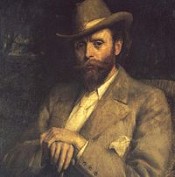
Sir Thomas Henry Hall Caine CH, KBE (14 May 1853 – 31 August 1931), usually known as Hall Caine, was a British author. He is best known as a novelist and playwright of the late Victorian and the Edwardian eras. In his time he was exceedingly popular and at the peak of his success his novels outsold those of his contemporaries. Many of his novels were also made into films. His novels were primarily romantic in nature, involving the love triangle, but they did also address some of the more serious political and social issues of the day. Caine acted as secretary to Dante Gabriel Rossetti and at one time he aspired to become a man of letters. To this end he published a number of serious works but these had little success. He was a lover of the Isle of Man and Manx culture and purchased a large house, Greeba Castle, on the island. For a time he was a Member of the House of Keys but he declined to become more deeply involved in politics. A man of striking appearance, he travelled widely and used his travels to provide the settings for some of his novels. He came into contact with, and was influenced by, many of the leading personalities of the day, particularly those of a socialist leaning. Caine's novels now seem outdated and despite his immense popularity during his life he is now virtually unknown and unremembered. Hall Caine was born in Runcorn, Cheshire, England and christened Thomas Henry Hall Caine but he disliked the name Thomas and never used it.[1] His father came from the Isle of Man but in the absence of work there he emigrated to Liverpool where he trained as a ship's smith. At the time of Hall Caine's birth he was working temporarily in Runcorn docks. Within a few months the family were back in Liverpool where Caine spent his childhood and youth. He was educated at the Hope Street British Schools until he was aged 14. During this time he paid a number of visits to relatives on the Isle of Man where the foundations for a life-long attachment to the island, to its language, its myths and its legends were built.[2] After leaving school he was articled to John Murray, an architect and surveyor. He developed a passion for books and spent much time in Liverpool's Free Library, later maintaining that he was mainly self-taught.[3] At the age of 15 he discovered the poetry of Coleridge and this was to be his first important literary influence. He started writing at this time and contributed articles to a trade paper The Builder, which also carried literary articles, and to local newspapers, particularly the Liverpool Mercury. In 1870 his grandfather died and later that year Caine had a type of nervous breakdown. He gave up his job and went to the Isle of Man. His uncle, James Teare, was a schoolmaster there but was ill at the time and so Caine acted as an assistant teacher in his school. During this time he started to become influenced by the writings of John Ruskin and he became 'an eager pupil and admirer'.[4] He later became a frequent visitor to Ruskin's Coniston home, Brantwood and a keen member of the local Ruskin Society. In December 1871 James Teare died and Caine carved a headstone for his grave. John Murray persuaded him to return to his job and in April 1872 he was back in Liverpool. There he wrote his first extended work of fiction, a play, but could not afford to have it produced. He continued to submit material frequently to the local press and he also acted as a freelance theatre critic. He then left his employment with Murray and joined the building firm of Bromley & Son as a draughtsman. However he continued to spend much of his time in writing. With friends he formed the Notes and Queries Society, ostensibly to discuss the arts, but the Society was also used to discuss and spread political ideas. At this time Caine's political beliefs were in the area of communism, but this was a type of communism nearer to Christian socialism than to Marxism.[5] In 1874 Caine, as theatre critic, went to see the Lyric Theatre's touring production of Hamlet with Henry Irving in the title role. Caine was very impressed by the performance and wrote an enthusiastic and favourable review which was well received. Caine and Irving subsequently became good friends. Caine continued to work, at least nominally, at Bromley's. Amongst his writing at this time was an attempted completion of Coleridge's poem Christabel. In 1877 Caine's younger brother, John James, died from tuberculosis, aged 21, and this had a deep effect on him. However by that year he was also gaining a reputation as a public lecturer and many of his lectures had been published. Around this time he also became interested in environmental and conservation issues. He joined the 'Save Thirlmere' movement which unsuccessfully tried to prevent the lake from being turned into a reservoir. In 1878, having become acquainted with the work and ideas of William Morris, he joined the 'Anti-Scrape Society', the forerunner of the Society for the Protection of Ancient Buildings, and remained a member for the rest of his life. In December 1878 Caine travelled to London to see Irving's first night at the Lyceum Theatre under his own management. Here he met Bram Stoker and they became good friends. Stoker was subsequently to dedicate his famous novel Dracula to Caine, under the nickname "Hommy-Beg". Caine had come to be very impressed by the poems of Dante Gabriel Rossetti and he gave a series of three lectures on the poems of Rossetti and other Pre-Raphaelites. He sent a copy of one of his published lectures to Rossetti who by that time had become a virtual recluse and was "ravaged by years of addiction to chloral and too much whisky".[6] A frequent correspondence followed and they eventually met in September 1880 when Caine visited Rossetti in his home at Cheyne Walk, Chelsea, where he lived "in shabby splendour".[7] The following year Caine left his employment in Liverpool and went to live with Rossetti and stayed there until Rossetti's death in April 1882. During that time he was "secretary, companion, housekeeper, general factotum and eventually nurse"[8] to Rossetti. Caine had negotiated for Rossetti's painting Dante's Dream of the Death of Beatrice to be hung in Liverpool's Walker Art Gallery and he represented the painter at its installation in November 1881. In January 1882 Caine's anthology Sonnets of Three Centuries was published. After Rossetti's death Caine gained an income by writing articles for the Liverpool Mercury while at the same time preparing a book about his time with Rossetti. This was entitled Recollections of Dante Gabriel Rossetti; it appeared in October 1882 and sold reasonably well. In 1883 Cobwebs of Criticism was published, a book about reviewers and whether or not their criticisms had been valid. During this time he was maintaining old friendships and building new ones with people who included Ford Madox Brown, Algernon Swinburne, Theodore Watts, R. D. Blackmore, Matthew Arnold, Robert Browning and Christina Rossetti. In consequence of his work as a theatre critic Caine met the actor-manager Wilson Barrett. It was at this time that Caine began to consider that his future might lie in writing fiction.[9] After appearing as a serial in the Mercury, Caine's first novel Shadow of a Crime was published by Chatto & Windus in February 1885. Set in the Lake District and based on a love triangle, it sold well and was still in print in the 1900s. It "launched Caine on a career as a romantic novelist of huge popularity which was to span forty years and produce fifteen novels".[10] The same year She's All the World to Me, another love triangle, was published in New York, a book which Watts and Chatto considered was not up to his previous standard, but Caine wanted the money from it and also exposure in America<.ref>Allen 1997, p. 178.</ref> The following year Chatto and Windus published A Son of Hagar in three volumes. Again set in the Lake District, it dealt with the theme of illegitimacy. It received some good reviews, but not from George Bernard Shaw who "took a bilious view of the romantic novels of his day with their ridiculous plots". However in time Shaw and Caine were to become good friends.[11] Caine craved to be recognised as a man of letters[12] and to this end he wrote a biography, Life of Coleridge, which was published in 1887. It was a failure and this confirmed to Caine that his future lay in fiction. Later that year his next novel The Deemster was published, again by Chatto & Windus. It was the first of Caine's novels to be set in the Isle of Man, where judges are called deemsters, and placed it in the 18th century. It included the story of a fatal fight with the body being taken out to sea only to float back to land the next day. It was a big success and the reviews were excellent. It ran to more than 50 editions and was translated into at least 9 languages. Wilson Barrett bought the stage rights and produced a stage version called Ben-my-Chree (Manx for 'Girl of my Heart') which was also successful despite its changed ending. In January 1890 the next novel was published after being serialised in the Isle of Man Times. This was The Bondman which was published by Heinemann rather than Chatto & Windus because they offered better terms. It is set in the Isle of Man and in Iceland. Again it was a great success despite its complicated story and its being "hopelessly sentimental and melodramatic".[13] Later the same year, in September, the next novel, The Scapegoat, was published. This time the novel was set in Morocco and its main theme is the persecution of the Jews; Caine hated anti-Semitism. It had a pro-Jewish theme and although it was a critical success, it did not sell as well as The Bondman. The Scapegoat brought Caine a considerable correspondence, mainly because of its pro-Jewish stance.[14] Following this Caine returned to non-fiction, publishing three lectures on the history of the Isle of Man as a book entitled The Little Manx Nation. His next fiction consisted of three novellas in one volume which were entitled Cap'n Davey's Honeymoon, The Last Confession and The Blind Mother. This was published in 1893 and was dedicated to Bram Stoker but did not sell well. However his next book, The Manxman published in 1884, was one of his greatest successes, eventually selling over half a million copies and being translated into 12 languages. This was again set in the Isle of Man and involved a love triangle.
do you like this author?
What readers are saying
What do you think? Write your own comment on this book!
write a commentWhat readers are saying
What do you think? Write your own comment on this author!
write a commentBook list

The Project Gutenberg Works Of Hall CaineAn Index
Series:
Unknown
Year:
Unknown
Raiting:
4/5
Show more
add to favoritesadd In favorites

The Drama Of Three Hundred & Sixty-Five Days
Scenes In The Great War
Series:
Unknown
Year:
Unknown
Raiting:
5/5
Show more
add to favoritesadd In favorites

The Woman Thou Gavest MeBeing the Story of Mary O'Neill
Series:
Unknown
Year:
Unknown
Raiting:
3/5
Show more
add to favoritesadd In favorites
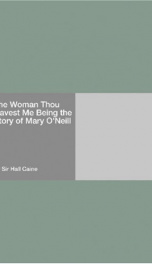
The Woman Thou Gavest Me
Series:
Unknown
Year:
Unknown
Raiting:
3/5
This book was converted from its physical edition to the digital format by a community of volunteers. You may find it for free on the web. Purchase of the Kindle edition includes wireless delivery. --This text refers to the Kindle Edition edition.
Show more
add to favoritesadd In favorites
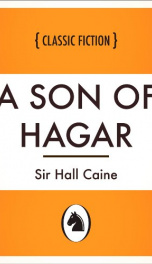
A Son of Hagar
Series:
Unknown
Year:
Unknown
Raiting:
4/5
Originally published in 1894. This volume from the Cornell University Library's print collections was scanned on an APT BookScan and converted to JPG 2000 format by Kirtas Technologies. All titles scanned cover to cover and pages may include marks notations and other marginalia present in the original volume.
Show more
add to favoritesadd In favorites
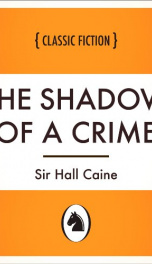
The Shadow of a Crime
Series:
Unknown
Year:
Unknown
Raiting:
4/5
Originally published in ca. 1900. This volume from the Cornell University Library's print collections was scanned on an APT BookScan and converted to JPG 2000 format by Kirtas Technologies. All titles scanned cover to cover and pages may include marks notations and other marginalia present in ca. the original volume.
Show more
add to favoritesadd In favorites
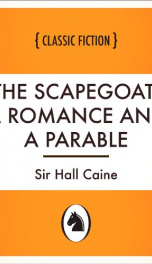
The Scapegoat; a romance and a parable
Series:
Unknown
Year:
Unknown
Raiting:
0.5/5
This book was converted from its physical edition to the digital format by a community of volunteers. You may find it for free on the web. Purchase of the Kindle edition includes wireless delivery.
Show more
add to favoritesadd In favorites
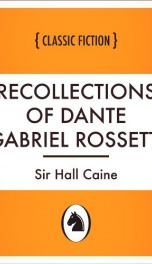
Recollections of Dante Gabriel Rossetti
Series:
Unknown
Year:
Unknown
Raiting:
4/5
This book was converted from its physical edition to the digital format by a community of volunteers. You may find it for free on the web. Purchase of the Kindle edition includes wireless delivery.
Show more
add to favoritesadd In favorites

The Manxman
Series:
Unknown
Year:
Unknown
Raiting:
3/5
Originally published in 1894. This volume from the Cornell University Library's print collections was scanned on an APT BookScan and converted to JPG 2000 format by Kirtas Technologies. All titles scanned cover to cover and pages may include marks notations and other marginalia present in the original volume.
Show more
add to favoritesadd In favorites
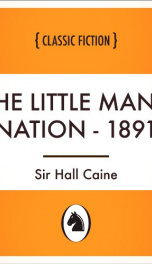
The Little Manx Nation - 1891
Series:
Unknown
Year:
Unknown
Raiting:
4.5/5
This book was converted from its physical edition to the digital format by a community of volunteers. You may find it for free on the web. Purchase of the Kindle edition includes wireless delivery.
Show more
add to favoritesadd In favorites
What readers are saying
What do you think? Write your own comment on this author!
write a commentif you like Caine Hall Sir try:
readers also enjoyed
What readers are saying
What do you think? Write your own comment on this author!
write a commentGenre
if you like Caine Hall Sir try:
readers also enjoyed
Do you want to read a book that interests you? It’s EASY!
Create an account and send a request for reading to other users on the Webpage of the book!

